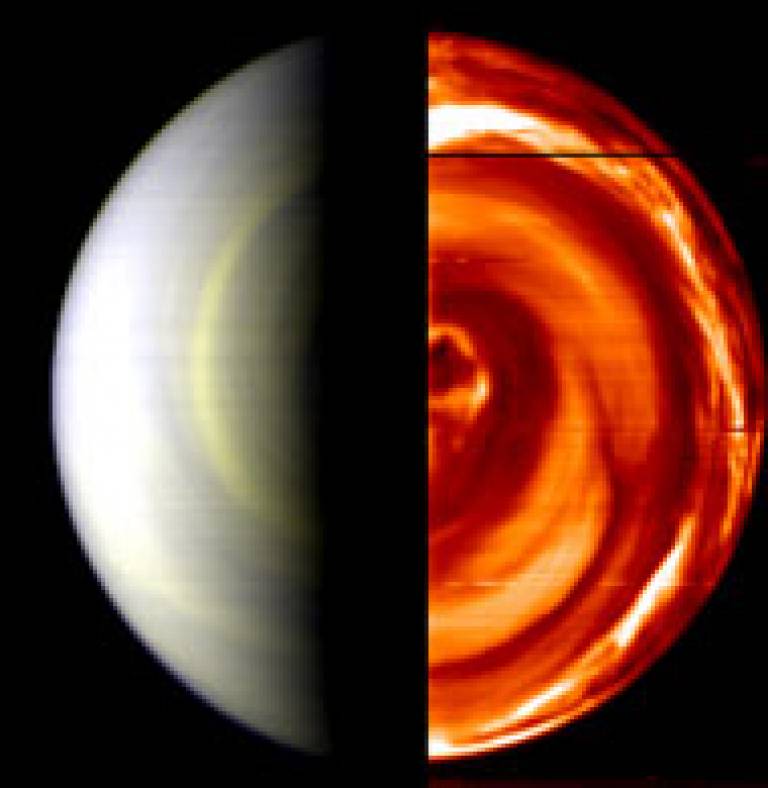Venus Express in orbit
25 April 2006
On the morning of 11 April 2006, the European Space Agency's (ESA) Venus Express spacecraft successfully entered orbit around Earth's twin planet after its five-month, 400km journey through space.

The manoeuvre, the space equivalent of a controlled handbrake turn, went precisely as planned. Over the next month, the orbit will be trimmed to its final elliptical orbit, 250km at its nearest point above the planet's North pole and 66,000km high over its South pole.
Dr Andrew Coates, Head of Planetary Science at the UCL Mullard Space Science Laboratory (MSSL) is also a Co-Investigator of the mission. He said: "In planetary terms, Venus is our nearest neighbour- but our worst nightmare: an Earth-like planet with a hellish atmosphere."
Venus and Earth were formed at the same time, 4.6 billion years ago, and have similar size and composition, with Venus about 50 million km nearer the Sun. However, the two planets have evolved quite differently. Venus' surface is hotter than an oven at 460°C, due to a runaway greenhouse effect. It has a carbon dioxide atmosphere with pressure over 90 times higher than Earth. With sulphuric acid clouds and super-rotating hurricane-force winds, the planet rotates slowly the wrong way round, and lacks a magnetic field.
Dr Coates said: "We are interested in why Venus has evolved so differently, becoming our evil twin, or 'twisted sister'".
UCL-MSSL built parts for, tested and led the team for the electron spectrometer on-board the ASPERA-4 instrument. ASPERA-4 will measure the escape of the unprotected Venus atmosphere in the gusty solar wind. On Earth, our magnetic field protects us from the million mile-an-hour stream of plasma from the Sun, but Venus lacks such magnetic protection.
Dr Coates added: "Although we think that Venus' atmosphere loses about 100 tonnes per day to space, it still has a pressure equivalent to 1km below our ocean's surface. Venus Express will search for signs of active volcanism which could explain this. Our results will help us understand how the atmosphere of Venus evolved."
On 12 April, Venus Express returned the first ever images of the hothouse planet's south pole from a distance of 206,452 km, showing surprisingly clear structures and unexpected detail.
Engineers have lost no time in switching on several of the instruments and, for the first time in space history, the southern hemisphere of Venus was imaged as the spacecraft passed below the planet in an elliptical arc.
Scientists are especially intrigued by the dark vortex shown almost directly over the South pole, a previously suspected but until now unconfirmed structure that corresponds to a similar cloud structure over the north pole.
Dr Coates said: "ASPERA-4 has operated twice so far in Venus orbit while far from the planet, and as expected it sees the solar wind. Now, we're waiting for the first exciting data near the planet itself due in May."
 Close
Close

